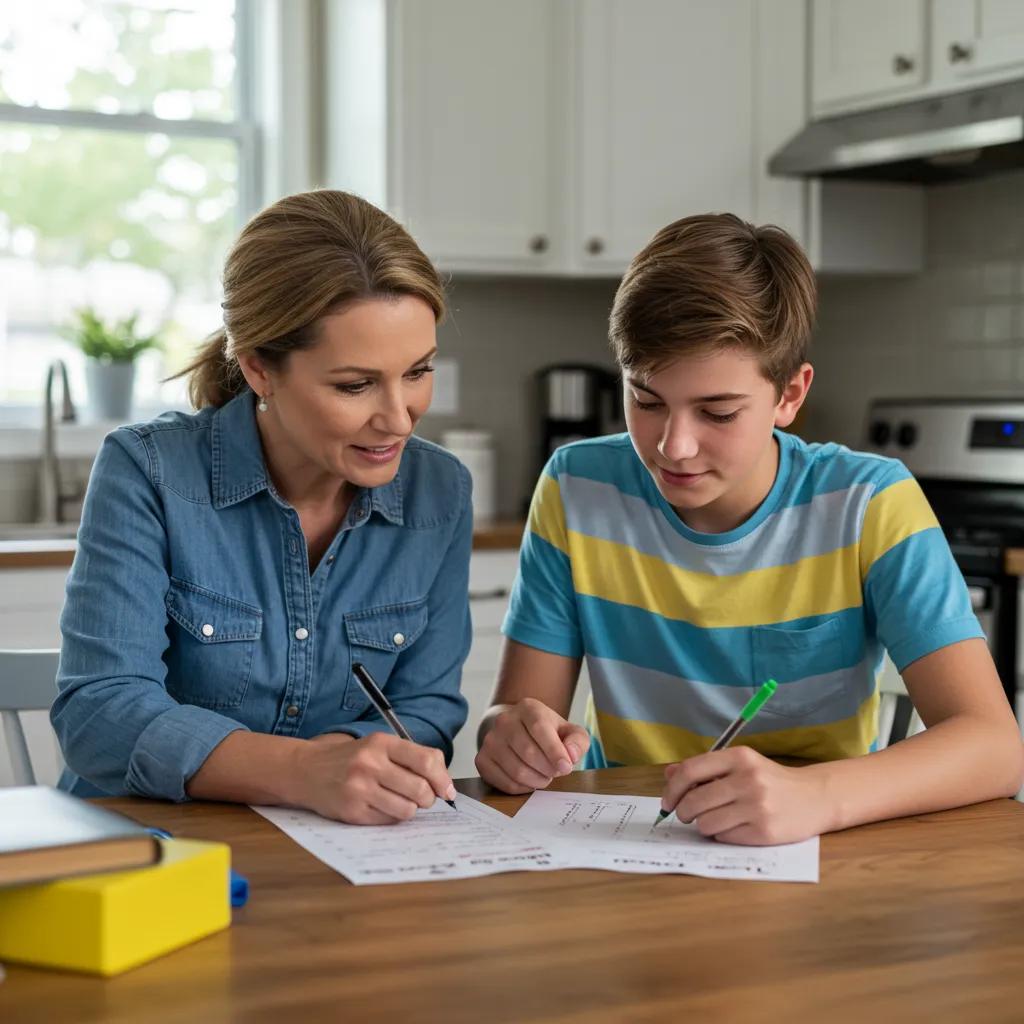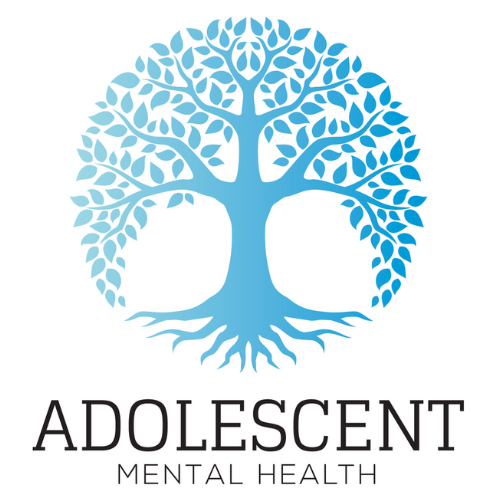Signs Of An Entitled Teenager: How to Recognize and Address Entitled Teen Characteristics
Many parents notice entitlement in adolescence but aren’t sure which behaviors reflect normal development and which signal a deeper problem. This article explains what an entitled teenager looks like, why those patterns emerge, and practical steps parents can take to reduce entitlement while supporting healthy adolescent development. Recognizing signs of an entitled teenager helps prevent lasting relationship and functional problems at home, school, and with peers, and it clarifies when therapy or more structured care is appropriate.
You will learn clear, observable signs, the root causes that drive entitlement, effective parenting strategies to build responsibility and empathy, and explicit red flags that indicate the need for professional help. The guide also compares entitled behavior with typical adolescent behavior using comparison tables, outlines concrete parenting actions, and explains treatment options including CBT, DBT, family therapy, and Virtual Intensive Outpatient Program (IOP) models. Throughout, keywords like teen entitlement symptoms, parenting strategies for entitled teens, and cognitive behavioral therapy for entitled behavior are integrated naturally to help you spot, address, and escalate care where needed.
What Are the Key Signs of an Entitled Teenager?

An entitled teenager typically expects special treatment, resists reasonable limits, and shows persistent patterns that reduce accountability and damage relationships. These behaviors operate through cognitive and emotional mechanisms: unrealistic expectations reinforce demands, emotional dysregulation fuels outbursts, and avoidance of responsibility prevents skill-building. The practical value for parents is early detection—spotting consistent patterns lets you apply boundaries and corrective strategies before patterns harden. Below is a concise list of core signs parents commonly observe and can monitor at home and school.
Common signs of entitlement include:
- Persistent lack of gratitude in response to ordinary favors or gifts.
- Unrealistic expectations about privileges, rules, or outcomes.
- Consistent disrespect toward parents, teachers, or authority figures.
- Poor work ethic, such as refusing chores or blaming others for failures.
- Emotional volatility when faced with disappointment or criticism.
These signs cluster together and often appear across settings; tracking frequency and context helps distinguish normal adolescent moodiness from entrenched entitlement that requires intervention.
Which Ungrateful Behaviors Indicate Teen Entitlement?
Ungrateful behaviors signal entitlement when they are repetitive, disproportionate, and resistant to corrective feedback rather than occasional lapses. Entitled teens may repeatedly say “you owe me” after favors, minimize others’ efforts, or demand gifts as compensation, which reflects a learned expectation rather than a momentary lapse. Parents can test for entitlement by offering small, earned privileges and observing whether appreciation is expressed or expected without earning. Tracking these patterns clarifies whether gratitude problems stem from social learning, emotional regulation deficits, or situational stressors that need targeted strategies.
How Does Disrespect and Poor Work Ethic Show in Entitled Teens?
Disrespect and poor work ethic typically manifest as refusal to complete age-appropriate tasks, dismissive language, or habitually blaming peers and adults for personal responsibilities. This pattern emerges when teens avoid effort by delegating consequences to others or by reframing accountability as unfairness, which maintains a cycle of low responsibility. Practical indicators include ignoring homework deadlines, refusing chores despite reminders, and using sarcasm or threats when corrected. Addressing these behaviors requires consistent expectations, measured consequences, and opportunities for the teen to regain trust through concrete tasks and follow-through.
What Are Common Emotional Traits of an Entitled Teen?
Emotional traits associated with entitlement include low frustration tolerance, impulsive reactions, and difficulty tolerating criticism, often coupled with limited perspective-taking. These traits reduce the teen’s ability to accept “no,” escalate conflicts quickly, and interfere with problem solving in relationships and school. Emotionally, entitlement is reinforced when caregivers remove natural consequences or rescue the teen from discomfort, which prevents development of regulation skills. Teaching emotional labeling, short de-escalation routines, and incremental exposure to manageable disappointments builds regulation and reduces entitlement-driven reactivity.
What Causes Teen Entitlement? Understanding Root Factors
Entitlement in teens arises from interacting causes: parenting practices that over-accommodate, cultural influences that reward instant gratification, and normal adolescent development that emphasizes autonomy and identity. Mechanistically, overindulgent parenting shapes expectation pathways, social media amplifies comparison and reward-seeking, and maturing executive functions can lag behind emotional drives, producing a mismatch that looks like entitlement. Understanding these root factors helps parents choose targeted corrections that address the cause rather than merely the symptom. The short list below highlights main contributors parents should evaluate in their family context.
Key causes include:
- Parental overindulgence or inconsistent boundaries that teach expectation without effort.
- Social media and consumer culture that normalize immediate rewards and curated success.
- Developmental brain factors: incomplete executive control during adolescence that undermines delayed gratification.
These causes often co-occur, so addressing multiple domains—rules at home, media limits, and guided responsibilities—yields the best results.
Intro to causal mapping table: The following table maps common causes to their mechanisms and example behaviors so parents can identify likely pathways driving entitlement in their teen.
| Cause | Mechanism | Example Behavior |
|---|---|---|
| Parental overindulgence | Rewards without work reinforce expectations | Expects expensive items without chores |
| Permissive or inconsistent rules | Lack of predictable limits undermines accountability | Ignores curfew because “rules change” |
| Social media influence | Comparison and validation loops increase demand for attention | Obsessed with likes and expects real-life rewards |
How Do Parenting Styles Contribute to Teen Entitlement?
Permissive parenting, frequent rescue from consequences, and inconsistent enforcement of rules create a learning environment where entitlement is adaptive for the teen. When caregivers repeatedly remove discomfort or provide rewards without performance, teens learn to expect external problem-solving rather than develop internal responsibility. Concrete corrective moves include reinstating consistent limits, assigning age-appropriate tasks, and linking privileges to clear performance. These changes recalibrate expectations and teach the teen that rewards follow responsibility rather than entitlement.
What Role Does Social Media and Society Play in Teen Entitlement?
Social media accelerates entitlement through curated success models and instant validation, which teach teens that attention equates to worth and that outcomes should be immediate. This mechanism increases comparison-driven dissatisfaction and fuels unrealistic expectations about possessions, status, and relationships. Practical parental mitigations include media literacy discussions, time limits, and promoting offline achievements that create durable self-worth. Reducing validation-seeking behaviors helps teens tolerate delayed gratification and diminishes entitlement cues.
How Does Adolescent Development Influence Entitled Behavior?
Normal adolescent development—identity formation, peer orientation, and still-developing executive control—can resemble entitlement but often resolves with maturity. The key difference is persistence and generalization: developmental impulses are temporary and context-specific, while entitlement is stable across situations and resists correction. Parents should monitor duration, cross-setting consistency, and response to boundaries to determine whether behavior is developmental or maladaptive. When patterns persist despite structured limits, escalation to therapeutic supports may be warranted.
How Can Parents Effectively Handle an Entitled Teenager?

Parents reduce entitlement most effectively by combining clear boundaries, consistent consequences, and activities that build empathy and competence. Mechanistically, boundaries change reinforcement contingencies, natural consequences teach cause-and-effect, and structured responsibility rebuilds a work ethic. The following numbered strategies present a practical roadmap parents can follow immediately to shift patterns at home.
- Set predictable rules and link privileges to specific responsibilities.
- Use natural consequences rather than rescues to reinforce accountability.
- Assign regular chores or paid tasks to teach work ethic and delayed rewards.
- Implement empathy-building exercises like perspective conversations or community service.
After implementing these steps, track small wins and recalibrate expectations weekly; consistent follow-through fades entitlement by realigning incentives toward effort and cooperation.
What Boundaries and Expectations Should Parents Set?
Effective boundaries are specific, measurable, and enforceable—examples include fixed chore lists, homework completion standards, and screen-time schedules. These expectations function because they convert vague demands into concrete tasks with predictable outcomes, which strengthens the teen’s sense of competence when met. Communicate rules calmly, set short-term check-ins, and apply proportional consequences when rules are broken. Over time, repeated success with small responsibilities restores trust and reduces entitlement-driven conflict.
How Can Parents Foster Gratitude and Responsibility in Teens?
Fostering gratitude starts with intentional daily practices such as gratitude journals, family appreciation rounds, and earned privileges tied to contributions. Responsibility grows when teens receive age-appropriate tasks with clear metrics and occasional rewards for consistent completion. Reinforce progress with verbal acknowledgment and incremental increases in responsibility rather than sudden large rewards. These habits build internal motivation and reduce reliance on external validation that fuels entitlement.
What Are Effective Ways to Promote Empathy and Work Ethic?
Empathy training includes perspective-taking conversations, role-play of real conflicts, and volunteer activities that expose teens to diverse experiences. To build work ethic, design progressive task bundles that require planning, follow-through, and reflection on outcomes. Use short coaching sessions to model problem-solving and praise specific effort rather than innate traits. Combining empathy-building with structured responsibilities fosters both social connection and practical competence.
When Is Teen Entitlement a Mental Health Concern? Signs to Seek Professional Help
Entitlement becomes a mental health concern when it co-occurs with significant functional impairment, risky behaviors, or persistent mood and anxiety symptoms that resist family-based interventions. Clinically relevant red flags include escalation to aggression, sustained academic decline, self-harm risk, or symptoms consistent with ADHD, ODD, anxiety, or depression that interfere with daily life. Early identification of these indicators prompts assessment and, when appropriate, referral to structured therapeutic programs that address both behavior and underlying mental health issues. The short checklist below helps parents decide whether to pursue professional evaluation.
Red flag checklist:
- Repeated aggressive or abusive behavior toward family members.
- Rapid decline in school performance with avoidance of responsibility.
- Signs of depression or anxiety that persist despite home strategies.
- Self-harm, suicidal talk, or other urgent safety concerns.
Intro to treatment comparison table: Below is a concise comparison of common therapeutic approaches, their target symptoms, and typical format so families can understand options and next steps.
| Treatment | Target Symptoms | Typical Format & Expected Benefit |
|---|---|---|
| CBT (Cognitive Behavioral Therapy) | Cognitive distortions, entitlement thinking | Individual sessions; teaches thinking-behavior links |
| DBT (Dialectical Behavior Therapy) | Emotional dysregulation, impulsivity | Skills groups + individual coaching; improves regulation |
| Family Therapy | Patterns, communication, boundaries | Joint sessions; changes family reinforcement cycles |
This table helps families match symptoms to approaches and clarifies that combined modalities often yield the best outcomes when entitlement co-occurs with mood or behavior disorders.
Adolescent Mental Health integration: When red flags and co-occurring conditions are present, families may consider clinical options that offer structured, evidence-based care. Adolescent Mental Health provides a Virtual Intensive Outpatient Program (IOP) that combines individual, group, and family therapy using CBT and DBT techniques to target entitlement-related thinking, emotional regulation, and family patterns. For families exploring structured care, a virtual IOP can offer consistent therapeutic intensity while keeping the teen engaged in home and school contexts.
What Red Flags Indicate Underlying Mental Health Issues?
Red flags include persistent functional impairment at school or home, escalating conflict that threatens safety, withdrawal and depressive symptoms, and behaviors consistent with ODD or severe ADHD that override typical corrective measures. These indicators suggest entitlement is part of a broader pattern requiring clinical assessment rather than parenting adjustments alone. If safety risks or severe mood symptoms appear, seek urgent evaluation from a qualified clinician. Early intervention improves the chance of reversing entrenched patterns.
How Do Therapy Approaches Like CBT and DBT Help Entitled Teens?
CBT addresses entitlement by identifying and restructuring cognitive distortions—such as beliefs that one is owed special treatment—and replacing them with realistic, responsibility-oriented thoughts. DBT adds skills for emotional regulation and interpersonal effectiveness, helping teens tolerate disappointment and communicate needs without coercion. Family therapy integrates these gains into the home by shifting reinforcement patterns and improving boundary-setting. Together, these therapies change thought-action cycles that sustain entitlement and build durable skills for autonomy.
How Can Virtual Intensive Outpatient Programs Support Teens with Entitlement?
Virtual IOPs deliver structured therapeutic intensity while allowing teens to remain in their home and school environments, making the care practical and consistent. These programs combine evidence-based modalities and multi-format delivery so therapists can address thinking patterns, emotional regulation, and family dynamics in concert. Virtual IOPs are particularly useful when entitlement is linked with co-occurring anxiety, depression, ADHD, or behavioral disorders because they provide coordinated care rather than isolated coaching. Below are clear benefits families often seek when considering a virtual IOP model.
Benefits of Virtual IOP:
- Improved access and scheduling flexibility without relocation.
- Structured daily or weekly sessions that reinforce new skills consistently.
- Peer group components that model accountability and social feedback.
After exploring whether a virtual IOP fits the family’s needs, many parents report faster stabilization and clearer family routines when therapy is combined with home-based follow-through.
Intro to program features table: The table below outlines core IOP components, their therapeutic purpose, and expected family benefits to clarify what families should expect from a virtual program.
| Component | Purpose | Family Benefit |
|---|---|---|
| Individual Therapy | Address cognitive patterns | Personalized goals and progress tracking |
| Group Therapy | Practice interpersonal skills | Peer feedback and real-world social learning |
| Family Therapy | Change reinforcement cycles | Improved communication and boundary maintenance |
This layout helps families understand how each component targets entitlement dynamics and supports sustained change.
What Are the Benefits of Virtual IOP for Teen Behavioral Challenges?
Virtual IOPs combine clinical rigor with convenience, enabling consistent participation, multi-provider coordination, and family involvement without travel burdens. The format preserves daily routines while delivering frequent, skill-focused sessions designed for measurable progress. For teens resistant to single-session therapy, the cohort and program intensity reinforce practice and accountability. Families benefit from structured communication plans and clinician-coached boundary strategies that generalize to home and school settings.
How Does Family Therapy Enhance Treatment for Entitled Teens?
Family therapy targets the interaction patterns that maintain entitlement, helping caregivers implement consistent consequences and avoid inadvertent rescues. Sessions focus on communication skills, role clarity, and real-time problem solving to alter reinforcement contingencies. By aligning caregivers around predictable responses and teaching teens negotiation skills, family therapy reduces conflict and supports sustainable behavioral change. This systemic shift often accelerates gains achieved in individual and group work.
How to Access Adolescent Mental Health's Virtual IOP for Entitlement?
To inquire about a Virtual Intensive Outpatient Program, families can contact Adolescent Mental Health to request an assessment and learn about program structure, intake steps, and scheduling. Typical intake covers clinical history, current symptoms, and family goals to match the teen with appropriate modalities like CBT and DBT within the IOP. Expect an initial assessment followed by a collaborative care plan that may include individual, group, and family sessions. For families needing structured clinical escalation, Adolescent Mental Health offers a pathway to begin that evaluation and determine next steps.








